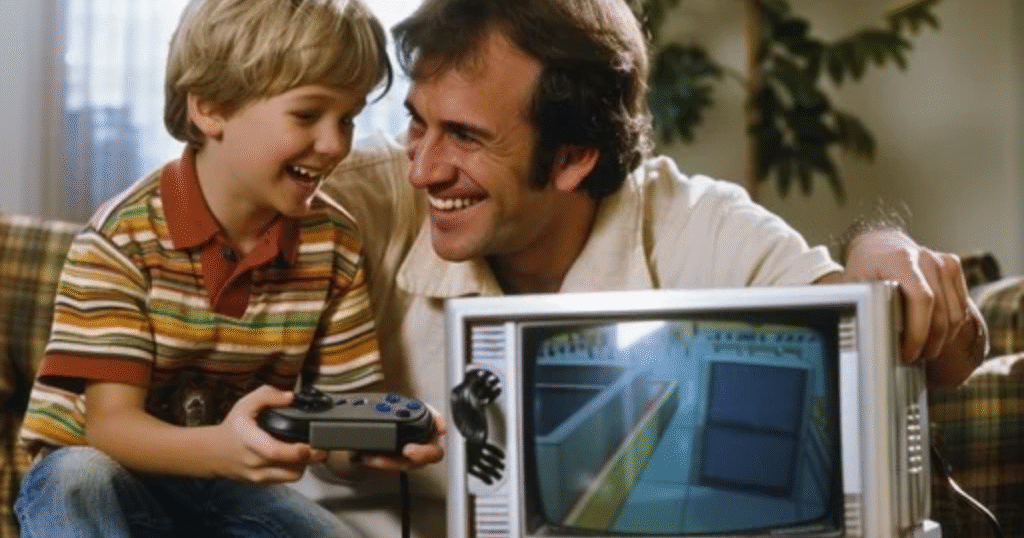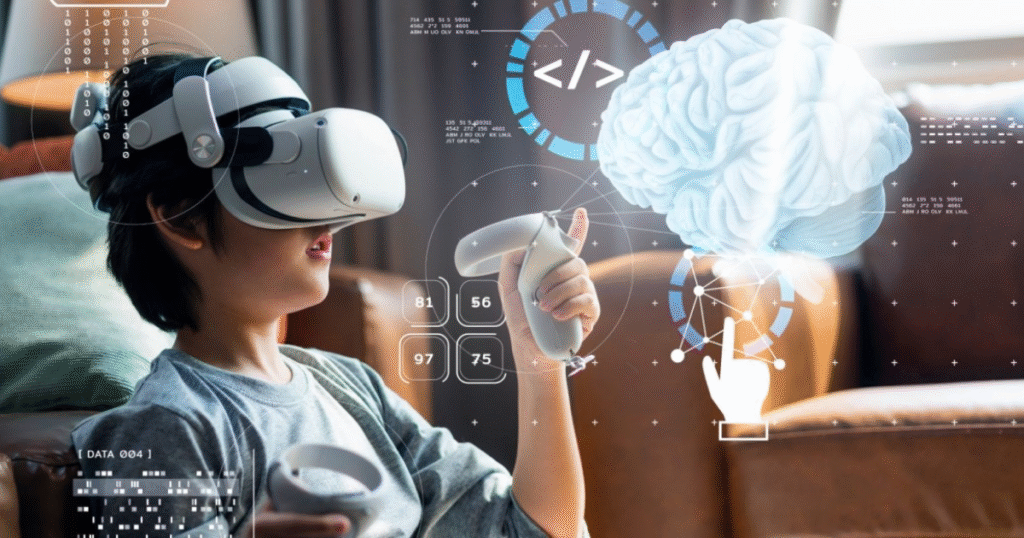Introduction
Retro gaming is no longer a niche hobby for nostalgic enthusiasts—it has surged into mainstream culture and shows no signs of slowing down. From 8-bit classics to pixel-perfect platformers, the retro gaming trend is dominating social media, influencing modern game design, and becoming a lucrative market for collectors and developers alike. But what’s fueling this massive resurgence?
Let’s dive into the factors behind the retro gaming comeback, its cultural impact, and why it resonates with players of all ages.
What Is Retro Gaming Trend?
Definition and Characteristics
Retro gaming refers to playing or collecting video games from earlier generations of consoles, computers, and arcades. These typically include:
- 8-bit and 16-bit games
- Classic arcade games
- Console games from the 70s, 80s, 90s, and early 2000s
These games are often characterized by:
- Simple graphics
- Chiptune music
- Linear or arcade-style gameplay
- Low hardware requirements
Platforms and Media
Retro games are commonly played on:
- Original hardware (cartridges, CDs, floppy disks)
- Emulators
- Remakes and remasters
- Miniature “classic edition” consoles
- Online archives and streaming platforms
Why Retro Gaming Is Making a Comeback
1. Nostalgia and Emotional Connection

The most powerful driver behind retro gaming is nostalgia. People who grew up in the 80s, 90s, and early 2000s are now adults with disposable income and a deep emotional attachment to their childhood experiences.
Playing retro games allows them to:
- Relive simpler times
- Share childhood favorites with their children
- Reconnect with friends through multiplayer classics
2. Simplicity and Pick-Up-and-Play Mechanics
Modern games often involve complex mechanics, lengthy tutorials, and high learning curves. In contrast, retro games offer:
- Straightforward controls
- Short gameplay sessions
- Instant action with minimal setup
This simplicity is especially appealing to casual gamers and people with limited time.
3. Accessibility Through Emulation
Advancements in software emulation have made it easy for anyone to play retro games on:
- Smartphones
- PCs
- Web browsers
No need for original hardware—just download an emulator and a ROM file. This has made retro gaming more accessible and widespread.
4. Affordable and Collectible
Compared to modern games, many retro titles (especially digital versions) are:
- More affordable
- Easier to store
- Less resource-intensive
For collectors, physical cartridges, boxed editions, and rare items are highly sought after, making retro gaming both a hobby and an investment.
5. Influence on Indie Game Development
Indie developers frequently draw inspiration from retro aesthetics and mechanics. You’ll see:
- Pixel art graphics
- Chiptune soundtracks
- Side-scrolling gameplay
These stylistic choices not only appeal to nostalgic gamers but also provide a cost-effective development path for smaller teams.
Cultural Impact of Retro Gaming
The Rise of Gaming Communities
Online communities built around retro gaming are thriving. These forums, social media pages, and Discord servers allow people to:
- Share high scores
- Discuss rare finds
- Organize online tournaments
- Collaborate on mods and fan projects
Retro Streaming and YouTube Content
Many content creators have made careers out of retro game reviews, speedruns, and playthroughs. These platforms fuel the trend by:
- Introducing old games to new audiences
- Creating viral moments around difficult or obscure titles
- Encouraging viewer participation through nostalgia
Game Preservation and History
Retro gaming has sparked interest in preserving gaming history. Digital archiving and fan translations are helping to:
- Prevent classic games from disappearing
- Make previously inaccessible titles available to a global audience
- Highlight the evolution of game design and storytelling
Challenges Facing Retro Gaming
Legal Issues and ROM Distribution
While emulation is legal, distributing game ROMs without permission is a legal gray area. This creates challenges for:
- Game preservationists
- Fans wanting to access rare or discontinued titles
- Developers trying to re-release classic games legally
Aging Hardware and Durability

Original consoles and cartridges degrade over time. Common problems include:
- Cartridge corrosion
- Broken power supplies
- Dying display components
Maintaining or repairing these systems can be costly and time-consuming.
Modern Player Expectations
Today’s gamers often expect:
- High-resolution graphics
- Cloud saves
- Multiplayer support
- In-game purchases
Retro games lack many of these features, which can deter younger or modern-first players.
Retro Gaming in Modern Life
Educational and Developmental Use
Retro games are increasingly used for:
- Teaching programming logic
- Introducing design principles in game development
- Improving reflexes and hand-eye coordination
Artistic and Aesthetic Inspiration
Retro visuals and sound design inspire not only games but also:
- Music production
- Graphic design
- Fashion and apparel
You’ll see pixel art used in everything from album covers to streetwear.
Merchandise and Pop Culture Integration
From action figures to t-shirts and wall art, retro game merchandise has become mainstream. This further embeds classic games into daily life and keeps them relevant to newer generations.
Psychological Benefits of Retro Gaming
Stress Relief
Playing familiar games provides comfort and can:
- Lower stress levels
- Improve mood
- Offer escapism from daily life
Cognitive Stimulation
Retro games often require:
- Quick decision-making
- Strategic thinking
- Precision timing
These cognitive demands can benefit older players looking to maintain mental sharpness.
Future of Retro Gaming
Continued Growth in Digital Re-releases
Many classic games are being re-released as:
- Digital downloads
- Subscription-based retro libraries
- Remastered editions with enhanced features
This trend ensures a continuous influx of retro content for modern audiences.
VR and Augmented Reality Integration

There are experimental projects that aim to bring retro games into:
- Virtual reality spaces
- Augmented tabletop formats
While still early, these efforts could bridge past and future gaming experiences.
Youth Appeal and New Fans
Thanks to retro-style games in app stores and indie titles, even younger generations are developing a taste for:
- Pixel graphics
- Classic platformers
- Puzzle and arcade genres
This guarantees retro gaming’s relevance for years to come.
Also Read : The NFT Gaming Revolution: Trends, Challenges, and Opportunities
Conclusion
Retro gaming’s comeback is no mere fad—it’s a full-blown cultural renaissance driven by nostalgia, accessibility, simplicity, and artistic influence. Whether you’re a lifelong fan or a newcomer discovering these classics for the first time, retro games offer a unique experience that modern titles sometimes lack.
As technology continues to evolve, retro gaming proves that innovation and simplicity can coexist. It’s not just about playing old games—it’s about honoring the roots of an industry that continues to shape entertainment today.
FAQs
1. What are the most popular retro games?
Some of the most iconic retro games include classic platformers, arcade shooters, fighting games, and RPGs from the 8-bit and 16-bit eras.
2. How do I play retro games today?
You can play retro games through original hardware, emulators, mini consoles, or digital re-releases on modern platforms.
3. Are retro games harder than modern games?
Many retro games are more challenging due to limited saves, trial-and-error gameplay, and fast reflex requirements.
4. Is emulation legal?
Emulation software is legal, but downloading or sharing copyrighted ROMs without permission may violate copyright laws.
5. Why are retro games still popular?
Retro games are beloved for their nostalgia, simplicity, and iconic design. They offer an experience that many modern games do not replicate.
